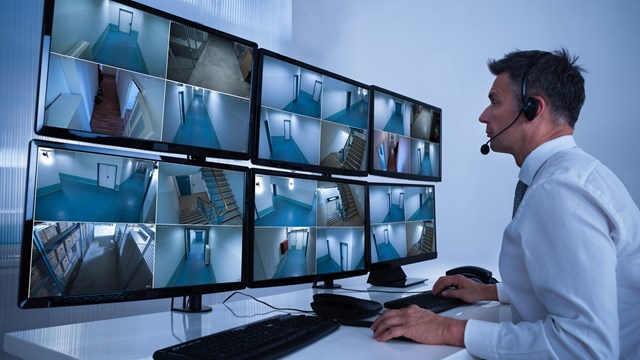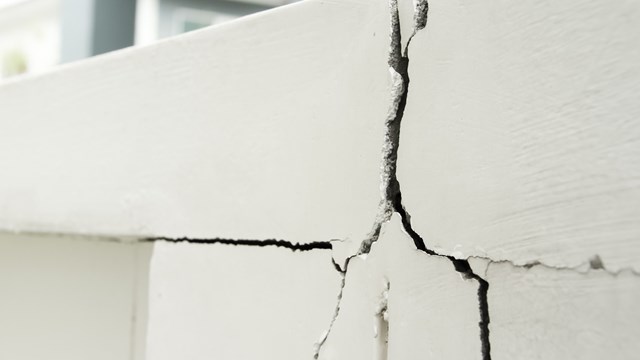For some, stairwells are the dark little secret places between floors, where the kids go to drink beer at night, or where others go to do who knows what. While residents of most buildings will have few reasons to use their building’s interior stairwells, others always seem to find the wrong uses for the space. And though it may seem just a minor inconvenience to the apartment owner in need of a little temporary storage, using stairway or hallway spaces wrongly can risk the life and limbs of everyone in the building.
That’s why understanding the safety, maintenance, and liability issues of maintaining stairwells, service corridors and other access-restricted “common areas” is paramount. In addition to understanding requirements for emergency lighting, cleanliness, and security issues in stairwells, city building codes also make it necessary to keep stairwells in top shape.
Given these considerations, making such spaces safer and more useful, through vigilant observance of them and through regular maintenance, is really just a matter of protecting a major investment. And failing to do so won’t just hurt everyone’s investment in their apartments; it could lead to someone losing their life—a cost too great for any residential community to bear. Not only is such an occurrence a tragedy, the resulting litigation, and its attendant financial burden could have a devastating effect on a building’s operations.
Keep It Clean
Comedian George Carlin once jokingly described a person’s house as “a place to keep your stuff.” At its core his witticism is true, but in many multifamily buildings in New York City, people can take that definition of a home more literally, misinterpreting their building's common areas as part of their own personal place to keep their stuff.
One challenge of maintaining stairwell safety has nothing to do with intruders sneaking in, or potentially faulty emergency equipment. Leaving a propped–open door, while it could allow trespassers in and should not happen in any case—is far less likely an occurrence than people leaving their stuff in the hallway or stairwell, which happens all the time in all classes of buildings.
Space is at such a premium in the city that some apartment dwellers justify leaving their things—even trying to store their belongings or garbage—in the hallway or stairwell. But even small stuff like shoes are a no-no, says Peter Roach, the president of the New York Superintendents Technical Association, who moonlights as “The Singing Super,” crooning Doo Wop hits at night for fun.
“Residents get comfortable and complacent. You’ve got to keep an eye on things, or the common space gets cluttered with personal belongings,” Roach says. “The two most important things are staying after the people to not use stairways for potential storage, and giving the fire department what they want—signage is big with those guys.”
Roach suggests people put themselves in the scenario of an emergency to imagine what firefighters and others are dealing with during such a crisis. Imagine the lights are out and the fire alarm is ringing in your building. Neighbors are screaming and the smoke is so thick you can’t see where you are going. “It can get ugly, quick,” he says.
Leaving things in the hallways or stairwells, first, is a trip and fall hazard. It’s also a safety hazard, because having obstructions lining emergency routes courts disaster, especially where older residents with mobility and balance issues live.
Hallways and stairways must be completely free and clear of all debris or personal belongings at all times. It’s not just smart; doing so is simply complying with city laws and the existing fire code. That means no shoes, no umbrella holders, no obstructions whatsoever in the hallway. It also means respecting the rules that were established to keep peace in the building.
Some residents will put their garbage in the hallway because they don’t want to keep it in their apartment, not thinking of how annoying the trash could be to the neighbors. In addition to being a fire safety violation, such behavior is ugly and lowers property values. Nonetheless, paintings, chairs, bags of clothing, ripped-out sinks from renovations, mattresses, end tables and all sorts of other junk can find their way into common areas. Sometimes, no one knows who owns them, because whoever discarded them doesn’t want to own up to it. These law-breakers are putting everyone in jeopardy.
“It’s about the fact that there could be something blocking the stairwell in the event of an emergency,” says Ed Lombardi, a property manager and the president of Benchmark LM Management Services LLC, in Mamaroneck. When it comes to issues with stairways or hallways being obstructed by personal belongings, it’s best for a building’s management to take a “zero tolerance approach,” says Peter Grech, a superintendent and general maintenance guru, who is a founding member of the NYCSTA.
“We threw out a bag in the hallway after putting a note to have it removed and it being there two days,” Grech said. “The guy flipped out because it was full of his hockey stuff… His wife didn’t want him keeping his smelly, stinky hockey stuff in the apartment, so he’d put it in the hallway.”
Keeping a vigilant watch in a building makes even more sense when you consider that common areas are primary selling points when marketing an apartment.
In many buildings, management isn’t required to leave a note to ask the resident to remove the things from the hallway. Building staff can discard the stuff as soon as they discover it. Many buildings, though, will give the resident a notification calling for immediate removal of the items in the common area. The house rule regarding debris in the hallway will be attached to the letter, to remind the resident of the rule he or she is breaking and the fines associated with it.
Sometimes, older people in a building need help but don’t ask for it, leaving stuff in the hall when they need the super or someone to cart it away. Daily walkabouts in the morning and evening throughout a building will help staff discover these items and correct the problem. And make no mistake—these seemingly small problems should not go uncorrected.
“If you want to sell an apartment, the common area is the first thing the buyer sees. We spend a lot of money to make sure our hallways and stairwells look good,” Lombardi says, adding that every building his company oversees has complaints of people throwing things out improperly—and with good reason. “It’s very easy for someone to get hurt in a stairwell.”
Safe Exit
A person can easily get injured when they can’t see where they are going and are under stress to evacuate. The possibility of lost lighting in a power outage or other emergency makes it crucial that buildings have emergency lighting in common spaces. That lighting should last for at least a couple of hours if it is needed, which should theoretically be ample time for residents to evacuate.
But in keeping with Murphy’s Law, the equipment won’t work when you need it if you don’t check on it. The super should test it at least weekly and many supers check emergency lighting systems daily, while also making sure nothing is blocking hallways or stairways. Daily sweeps and cleanups of these spaces by supers and building personnel are essential to running a safe building. “The old proverbial banana peel, or a spill on the stairs that people could slip on, must be taken care of immediately,” Grech says. “People do use those stairs; in some buildings, they use them for exercise.”
Since in some buildings common areas are rarely used and they forget how important it is to monitor the spaces, some condo building boards can be tempted to let stairway issues slide.
Even so, being watchful is part of a board’s fiduciary duty help oversee the property for all the residents. So in addition to ensuring that the common spaces are clean and free of debris and have working emergency lights and doors that operate properly, a building’s management must be sure that the stairways are fully compliant, and equipped with self-closing doors.
It’s all really a matter of safety, Grech says. “People don’t worry about these things for some reason. They all think that the building staff has got their back,” he says.
But the building staff may have a lot more on its hands in an emergency than worrying about individual residents’ needs. The super might not even have an extra flashlight to loan you if you need one in an evacuation, so each resident should have their own “Go Kit” of needed items including a flashlight with fresh batteries, some food and water, some extra clothing, necessary medicines and other supplies. And each resident also should know where to go if there is a fire or another emergency in which the building needs to be evacuated.
Residents need to know the evacuation route out of their building. Each route from each building is unique, and some buildings have evacuation routes that take a resident from one floor to another, and that unexpected floor could be disorienting (especially during an emergency) if residents aren’t familiar with the route.
One of the newer steps being taken to make stairwells safer is glow in the dark photo-luminescent tape placed on the stairs. The tape lasts a couple hours during an emergency, and will help people get out of the building even if smoke is thick or the emergency lights malfunction. The safety item is not required in New York City residential buildings yet, but experts say in the future, it likely will be mandated. Local Law 26 of 2004 took effect in 2006 and requires photo-luminescent emergency lighting tape for commercial office buildings, hotels, industrial facilities and institutional uses.
Jonathan Barnes is a freelance writer and frequent contributor to The Cooperator.







Comments
Leave a Comment